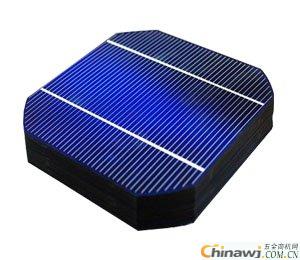Polysilicon price analysis and market outlook
2025-07-09 12:22:54
The drop in polysilicon prices at the end of 2012 was not unexpected. By December 31, 2012, the price had reached a low of 115.125 million yuan per ton. Then, in early January 2013, prices for various types of polysilicon photovoltaic products began to rise again. Single-crystal products were among the first to rebound, and within a few weeks, the entire industry chain saw a price increase. Silicon wafers, solar cells, and modules all experienced a significant upward trend. Several factors contributed to this price recovery:
1. Recent domestic anti-dumping measures against polysilicon imports and the active reduction of production by some downstream companies have led to supply shortages across the industry. Additionally, strong demand from both Japan and China has made the price increase reasonable.
2. Expectations of anti-dumping actions and a shift in supply and demand dynamics have driven the market. On the demand side, near-term demand is on the rise, while polysilicon producers remain largely offline, leading to short-term supply shortages. This situation has created an opportunity for price recovery. Although increased shipments of PV modules are due to rising demand, overcapacity remains a major issue.
To address these challenges, the State Council held a meeting to promote structural adjustments and technological upgrades in the photovoltaic sector. It encouraged mergers and acquisitions and aimed to eliminate outdated production capacity. At the 2013 National Energy Work Conference, it was announced that the country would focus on expanding distributed photovoltaic power generation, targeting an annual installed capacity of 10 million kilowatts. These initiatives are expected to boost the industry, accelerate M&A activities, and lead to the restructuring of more than one-third or even half of the companies. If major players consolidate, they will likely reduce and shut down some production lines, further supporting polysilicon price increases.
3. In the first quarter of this year, China launched anti-dumping investigations against U.S. and Korean polysilicon firms, imposing duties ranging from 30% to over 50%. This has increased production costs for some manufacturers, prompting preventive purchases and contributing to a more gradual price increase.
4. During the Spring Festival holiday, some domestic solar manufacturers continued operations to meet urgent global orders, which also contributed to higher product prices.
2. U.S. exports and polysilicon imports remain high.
According to the latest customs data, China imported 6,791 tons of polysilicon in January 2013, a slight increase from the previous month and up 12% year-on-year. The average import price for polysilicon in January hit a record low, dropping sharply to $18.47 per kg—a decrease of 11.58% from December 2012 and 41.5% compared to the same period in 2012. This was 27.17% lower than the 2012 average.
Looking at country-specific import data, South Korea, the United States, and Germany were the top three sources, accounting for 89.9% of total imports. South Korea's imports totaled 1,062 tons (15.6%), the U.S. imported 3,627 tons (53.4%), and Germany imported 1,414 tons (20.8%). Other regions accounted for just 688 tons, or 10.1%.
In terms of import prices, Germany and the U.S. saw their unit prices fall from December 2012, reaching $24.99/kg and $14.70/kg, respectively. South Korea’s import price rebounded to $19.79/kg. The U.S. remained the lowest-priced source in January 2013, hitting a new record low.


Emergency lighting luminaires are fixtures that are specifically designed to provide illumination in the event of a power outage or emergency situation. These luminaires are equipped with a backup power source, such as a battery or generator, that allows them to continue providing light even when the main power supply is not available.
Emergency lighting luminaires are commonly used in buildings, such as offices, schools, hospitals, and public spaces, to ensure that occupants can safely evacuate during emergencies. They are typically installed in hallways, stairwells, exits, and other critical areas where visibility is crucial.
These luminaires come in various shapes, sizes, and designs to suit different applications and aesthetics. They are often equipped with features like adjustable brightness levels, automatic testing and monitoring systems, and long-lasting LED bulbs for energy efficiency.
Overall, emergency lighting luminaires are essential safety devices that provide peace of mind and security in the event of unexpected power failures or emergencies.
Emergency Lighting Luminaire,Emergency Light Bulb,Emergency Luminaire,Led Emergency Luminaires
JIALINGHANG ELECTRONIC CO.,LTD. , https://www.jlhemergencylighting.com